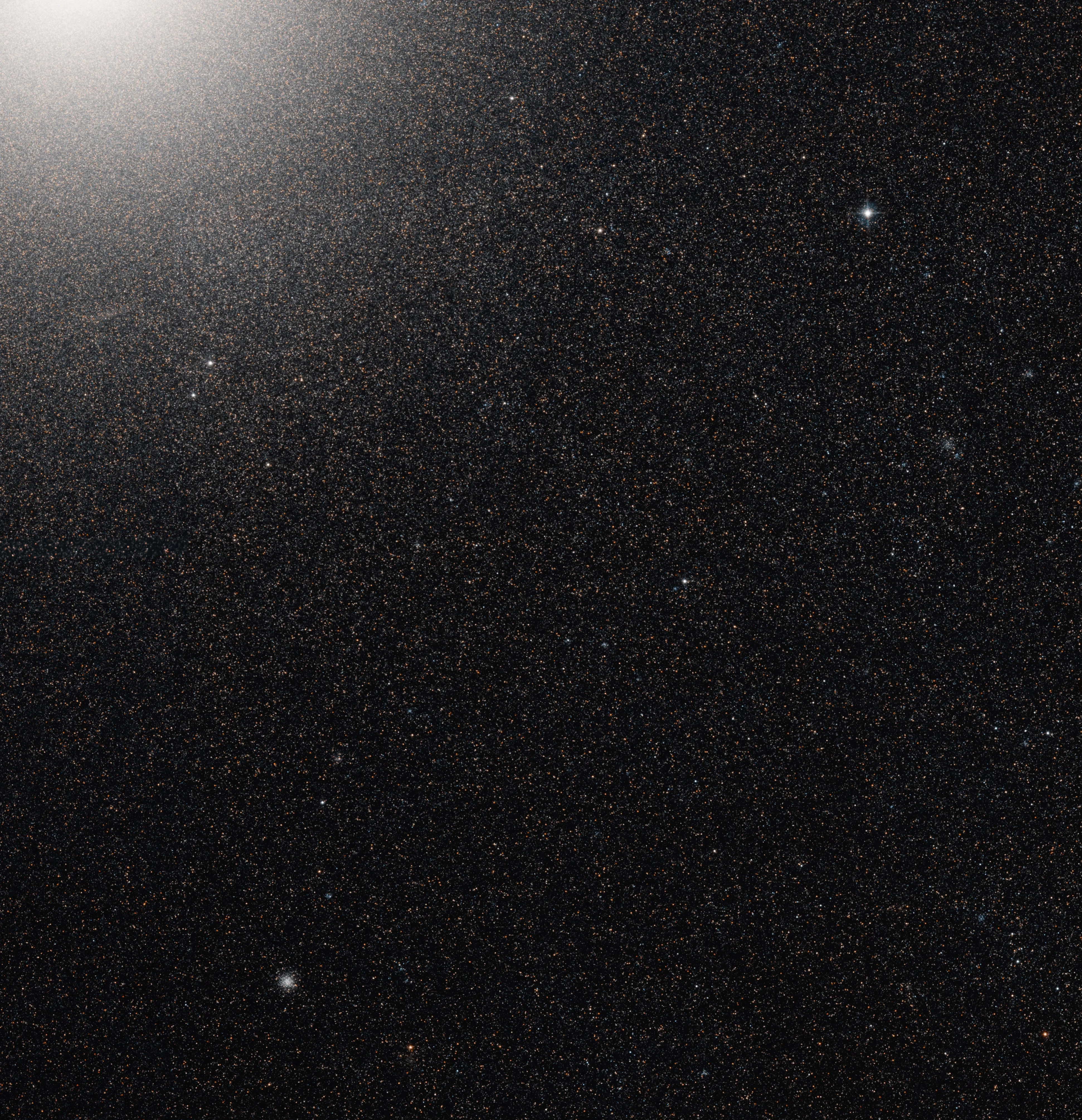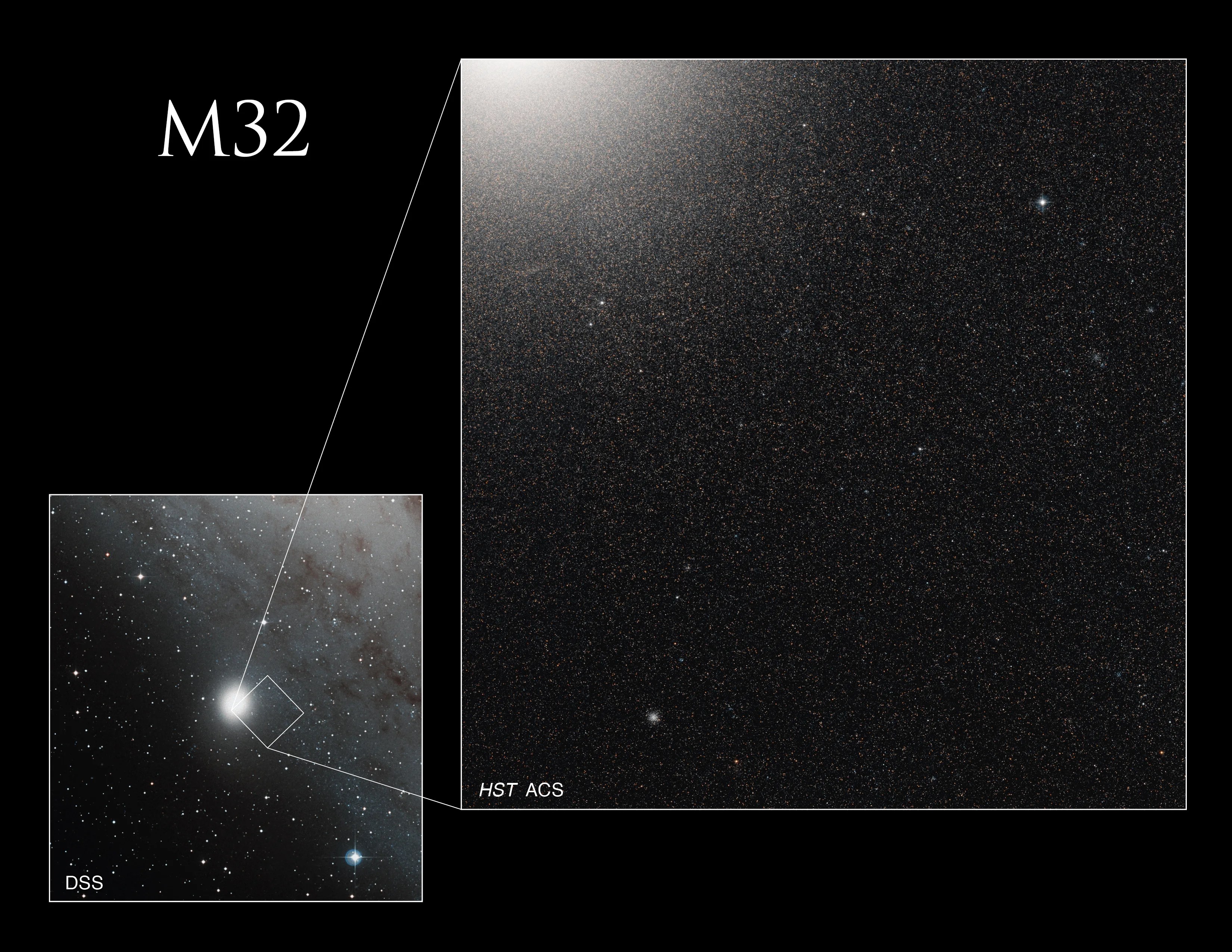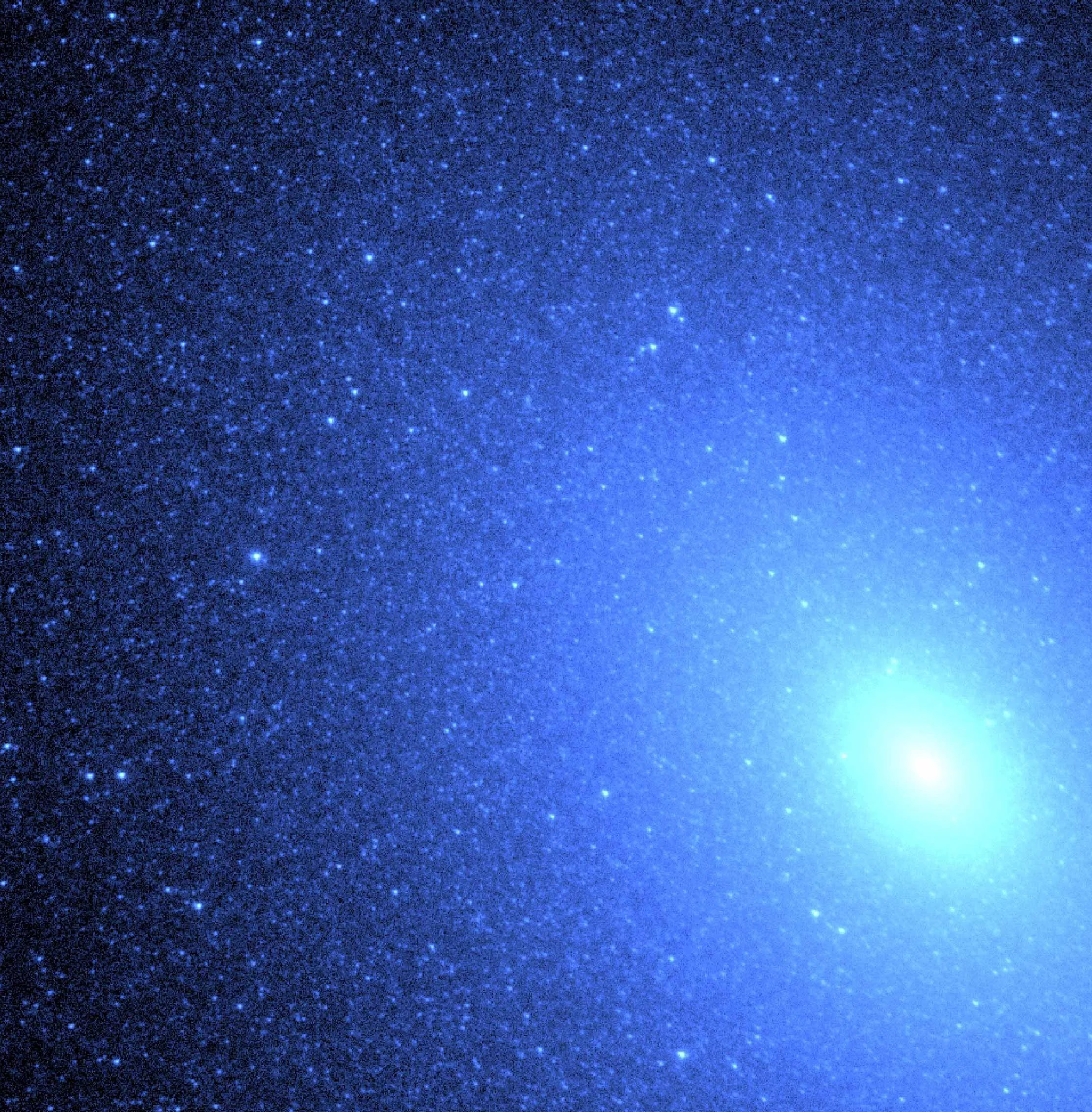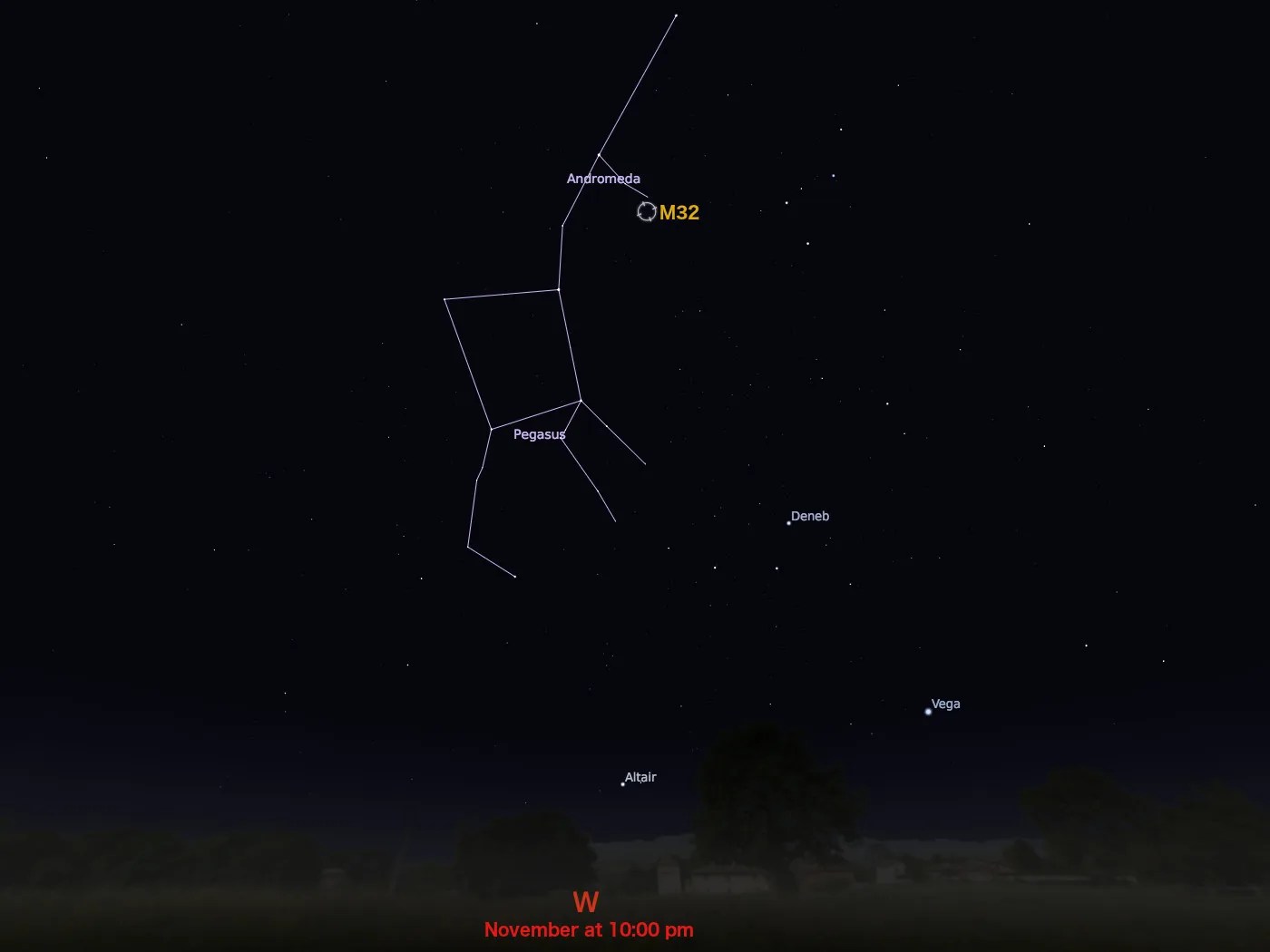Messier 32
Messier 32 is a satellite galaxy of the Andromeda Galaxy (M31).
Distance
2.5 million light-years
Apparent Magnitude
8.1
constellation
Andromeda
object type
Elliptical Galaxy

Countless stars, from the compact core to the less dense outskirts of M32, are packed into this single Hubble image. An elliptical galaxy, M32 is located 2.5 million light-years from Earth in the constellation Andromeda. It is one of two satellite galaxies orbiting M31, the Andromeda galaxy, that also belong to the Messier catalog. (The other is M110.)

M32 was discovered by the French astronomer Guillaume Le Gentil in 1749 and is best observed in November. The galaxy has an apparent magnitude of 8.1, and can be seen using a medium-sized telescope. It is relatively easy to locate, as it falls in the same field of view as M31, but a large telescope is needed to resolve any detail beyond a spot of light.
This Hubble image of a portion of M32 shows stars crowded in the galaxy's core at upper left, while stars in the outer parts of the galaxy fill the rest of the view. The image combines visible and infrared observations taken with the Advanced Camera for Surveys and the Wide Field and Planetary Camera 2. The galaxy has been used to study gravitational microlensing ― a phenomenon in which the gravity of stars bends light as the stars pass one another ― and variable stars that can be used to measure astronomical distances.
For more information about Hubble’s observations of M32, see:


Explore Hubble's Messier Catalog
The following pages contain some of Hubble’s best images of Messier objects.

Messier 1 (The Crab Nebula)
Better known as the Crab Nebula, Charles Messier originally mistook Messier 1 for Halley’s Comet, which inspired him to create…

Messier 2
Hubble's image of Messier 2 is comprised of visible and infrared wavelengths of light.

Messier 3
Messier 3 holds more than 500,000 stars.




